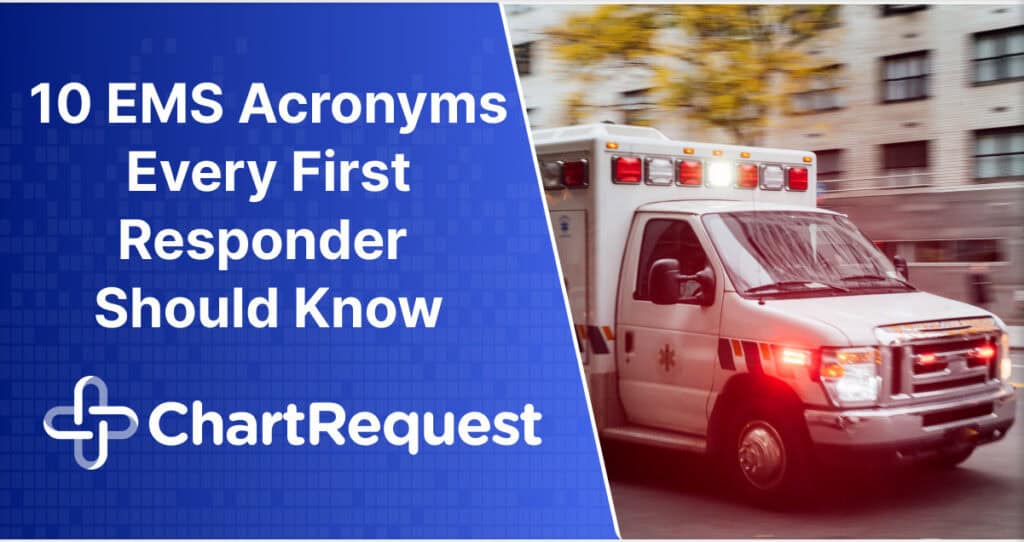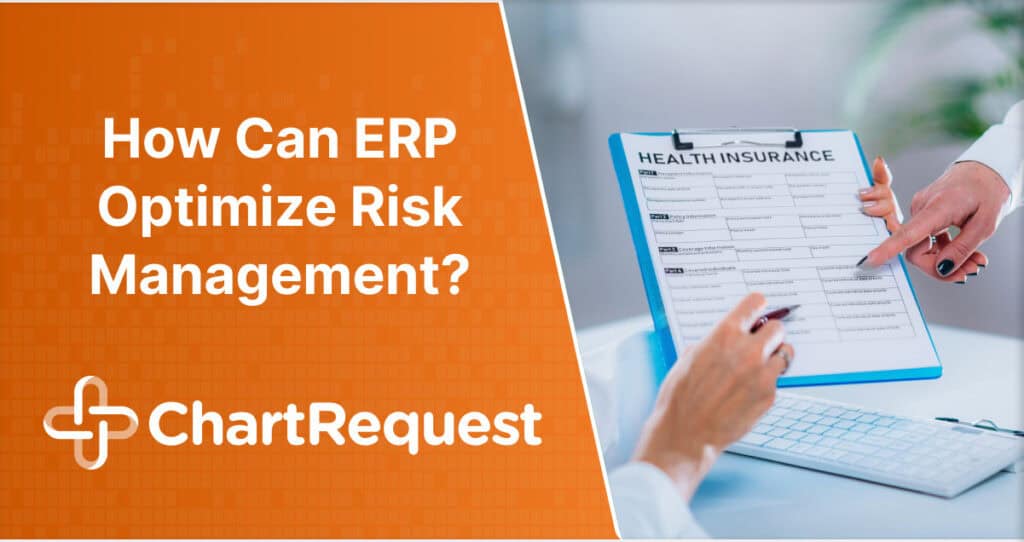When patient health is at stake, delays aren’t an option. It’s crucial to get medical records released fast and avoid delays!
Every minute counts in healthcare. Having easy access to medical records is not only crucial for patient care, it’s also convenient for the admin staff.
Imagine a person sifting through stacks of paperwork. It’s a scene of endless wait for record approvals that soon turns into a bottleneck. For patients, it often means long queues and lengthy wait times for the medical record staff to respond.
This leads to potential delays in treatment or necessary interventions. Such delays can affect the quality of care and even the outcome of medical decisions.
This pressing need for quick and efficient access means your organization needs to streamline the release of information.
Fast-tracking medical record release goes beyond the boundaries of efficient administration. This process directly impacts lives.
A 2016 joint study found that nearly 80% of medical errors are due to miscommunication during care transitions, often stemming from inaccessible patient records. Depending on the ROI platform used, the average turnaround time for medical records requests can range from a few days to several weeks.
Such timeframes are hardly conducive to the urgent needs of patient care. These delays can lead to more uncertainty, treatment interruptions, and increased medical expenses for patients. For healthcare providers, it means administrative problems, higher costs, and potential legal issues.
Release of information solutions like ChartRequest leverage modern technology to make swift medical record exchanges a reality. These technologies are marrying speed with security.
In this article, let’s explore how to get medical records fast by leveraging modern solutions like ChartRequest.
Traditional Challenges in Medical Records Retrieval
Medical record release has historically been plagued with various challenges. The healthcare industry continues to evolve, and so do the complexities surrounding the timely and secure access to these records.
- Lengthy turnaround times: The average wait time for medical records could span from several days to multiple weeks. These prolonged periods can severely disrupt patient care continuity.
- Paper-based systems: Despite the digital age, a significant number of facilities still rely on paper-based records. According to a study by The Office of the National Coordinator for Health Information Technology (ONC), in the entire healthcare landscape in 2011, only 28% of hospitals used EHR systems. This left a significant portion still entrenched in manual, paper-driven processes. It took another eight years for other facilities to follow and reach 98% in 2019.
- Administrative burdens: Manual record retrieval processes often impose heavy administrative tasks on staff. This leads to inefficiencies and increased operational costs.
- Privacy concerns: Manual systems, often devoid of advanced security features, can sometimes compromise the confidentiality of patient data. There have been several HIPAA violations in the past that led to massive lawsuits.
Given these challenges, it’s clear that the traditional means of accessing medical records are riddled with inefficiencies and potential risks.
What is the turnaround time for medical records requests?
A common question asked by healthcare professionals, facility administrators, and patients is how long it takes to process medical records requests. Delays can impact patient care, and create administrative burdens and collaborative challenges. Let’s address this vital question:
Standard Turnaround Time
The Health Insurance Portability and Accountability Act (HIPAA) stipulates that medical records should be provided within 30 days of the request. This is seen as the benchmark for many facilities. However, this duration can vary based on the state laws, the type of record requested, and the specific healthcare facility’s procedures.
Factors That Impact Turnaround Time Include:
- The volume of records: A request encompassing several years of patient data will naturally take longer than a request for a single visit’s record.
- Format of records: Electronic Health Records (EHR) can usually be retrieved and shared faster than physical or paper-based records.
- Inter-facility coordination: If a patient has seen multiple specialists or has been to different facilities, collating all those records can add to the retrieval time.
- Legal and compliance checks: Ensuring all records are shared while adhering to compliance norms can sometimes add to the delay.
- ChartRequest’s contribution: With ChartRequest’s streamlined and efficient software, many healthcare facilities have reported significant reductions in their average turnaround times. By digitizing and centralizing the request process, delays associated with manual processes and paper-based systems are eliminated.
Why Do Your Organization’s Medical Record Turnaround Times Matter?:
- Patient Care: A delay in accessing medical records can stall critical treatments or medical procedures.
- Operational Efficiency: Faster record retrieval improves the workflow within a healthcare facility, reducing administrative bottlenecks.
- Legal Implications: Prolonged delays, especially beyond the stipulated 30 days, can lead to legal repercussions and potential penalties for the healthcare provider.
7 Benefits of a Quicker Turnaround Time
Given the impact of medical records, quick access is important. By reducing the turnaround time for medical records retrieval, both healthcare professionals and patients stand to gain immeasurably.
- Enhanced Patient Care: Quick access to medical records, diagnoses, and treatments enables healthcare providers to make informed decisions more quickly. This accelerates the treatment process, ensuring patients receive the care they need without unnecessary delays.
- Reduced Administrative Burden: Lengthy record retrieval processes often mean more administrative work. By speeding up this process, healthcare facilities can free up staff time. They can now focus on more pressing tasks and improving overall operational efficiency.
- Improved Patient Satisfaction: Waiting for medical records can be a source of anxiety for many patients, especially if their health condition is critical. A quicker turnaround time can significantly enhance patient satisfaction. They feel more valued and less stressed about delays.
- Cost Savings: Time is money. When medical records are released faster, it leads to fewer man-hours spent on retrieval tasks. This translates to monetary savings. Over time, these savings can accumulate, benefiting the bottom line of healthcare facilities.
- Boosted Inter-facility Collaboration: Quick and efficient record sharing improves care coordination between different healthcare facilities. This is especially beneficial for patients who consult multiple specialists or those transferred from one facility to another.
- Lower Risk of Errors: The faster medical records are available, the lesser the chance for manual errors or misinterpretations. This leads to safer patient care and reduces the risks associated with medical oversights.
- Enhanced Compliance: With regulations like HIPAA emphasizing timely access to patient records, a faster retrieval process ensures healthcare facilities remain compliant and avoid potential legal complications.
ChartRequest: Revolutionizing Medical Records Retrieval
Around 80% of healthcare data remains unorganized and scattered across different sources, even when converting health information into a digital format. These data silos hinder seamless information exchange, causing significant delays in patient care.
Despite the adoption of Electronic Health Records (EHR) systems, the challenge of efficient medical record release remains.
Enter ChartRequest.
With a mission to spearhead change, ChartRequest bridges the gap between fragmented EHR systems. With this, we are able to meet the demand for speedy record access.
ChartRequest’s software aims to streamline the process of releasing information by providing a single solution that reduces the need for manual tasks. Our modern approach plays a pivotal role in dismantling data silos. It also enhances the interoperability of health systems.
The benefits of ChartRequest are manifold. Healthcare providers, from doctors to administrators, can significantly reduce the time spent on managing record requests. They can now improve operational efficiencies.
For patients, this means faster medical record access. Efficient retrieval is crucial during urgent health situations. Additionally, the streamlined process minimizes errors. We ensure that the right data reaches the right hands at the right time.
By fostering better data accessibility and interoperability, ChartRequest is paving the way for a more collaborative and efficient healthcare environment. This benefits everyone involved.
5 Features that Fast-Track Medical Record Release
Quick access to medical records is crucial for efficient healthcare. That’s why ChartRequest continues to create groundbreaking solutions in health information exchange.
5 features that expedite the retrieval of medical records:
- Streamlined processes: ChartRequest introduces a user-friendly interface so users do not go back to paper-based systems. This simplifies the entire process. Our software enables healthcare facilities and patients to easily request and access medical records.
- Enhanced security: HIPAA compliance is non-negotiable in the medical world. ChartRequest’s platform is built with the highest security standards in mind. Protected health information (PHI) remains confidential at all times. Every user action, from logins to record retrievals, is monitored and encrypted to ensure complete data integrity and security.
- Rapid turnaround time: Time is of the essence when dealing with patients’ health. ChartRequest significantly reduces the waiting period. Records are dispatched quickly to the relevant parties, be it patients or healthcare providers. This aids in timely diagnosis and treatment, and enhances patient satisfaction.
- Transparent tracking: TchartRequest values transparency. Users can effortlessly track the status of their medical record requests in real-time. We ensure visibility and accountability throughout the process.
- HIPAA-trained team: ChartRequest’s commitment to safeguarding PHI extends beyond its robust software. The team behind the platform is comprehensively trained in HIPAA guidelines, We guarantee every interaction is compliant and secure.
Agile and secure solutions for health information exchange are an important pillar in healthcare.
ChartRequest stands at the forefront of this transformation. We offer a modern approach to releasing medical records quickly. We prioritize both efficiency and compliance throughout the process.
5 Tips for Smooth & Faster Medical Record Retrieval Transaction with ChartRequest
Quick access to medical records is essential for providing excellent patient care and improving operational efficiency.
Although ChartRequest has made the process much simpler, there are still some obstacles that can sometimes create hiccups in an otherwise smooth transaction.
Often, these challenges arise from common oversights by users. Addressing these can expedite retrieval and foster better collaboration.
Here are five critical tips to consider:
- Complete information: The most common delay results from incomplete or inaccurate patient information. Always double-check to ensure that patient details, including full name, date of birth, and other pertinent identifiers, are accurate.
- Specify record types: Be clear about the types of records you’re requesting. Whether it’s lab results, imaging reports, or consultation notes – specific details can prevent unnecessary back-and-forths.
- Ensure authorization: Patient authorization or legal proof of entitlement is required for all requests. Ensure that the authorization form is correctly filled out and signed.
- Stay updated: ChartRequest often rolls out new features and updates to make the process even more seamless. Users should stay abreast of these updates and leverage them for smoother transactions.
- Open communication channels: Ensure that the contact details provided are correct and that there’s someone available to address any queries from ChartRequest’s end. Timely responses can significantly expedite the process.
By ensuring clarity, precision, and open communication, users can maximize ChartRequest’s efficiency, circumventing common pitfalls and ensuring a fluid medical record retrieval process.
ChartRequest— Your Partner in Fast Medical Record Release
The dynamics of healthcare are constantly changing. Today, modern solutions like ChartRequest are revolutionizing the process of releasing medical information. We make it faster, more transparent, and highly secure.
Patient-centered care is now the focus of progress, and ease of medical record access significantly impacts care quality. Prompt and secure exchange of medical records is essential. No more anxiously waiting for critical medical information for healthcare professionals and patients.
ChartRequest, with its advanced software for releasing information, is at the forefront of this transformation. Our technology is making the process more efficient and secure. Many healthcare facilities and patients are benefiting from these improvements, which include better patient results and improved administrative efficiency.
Ready to revolutionize your medical records process? Dive into the future with ChartRequest today and experience unparalleled efficiency and security. Don’t wait – elevate your healthcare delivery now!








